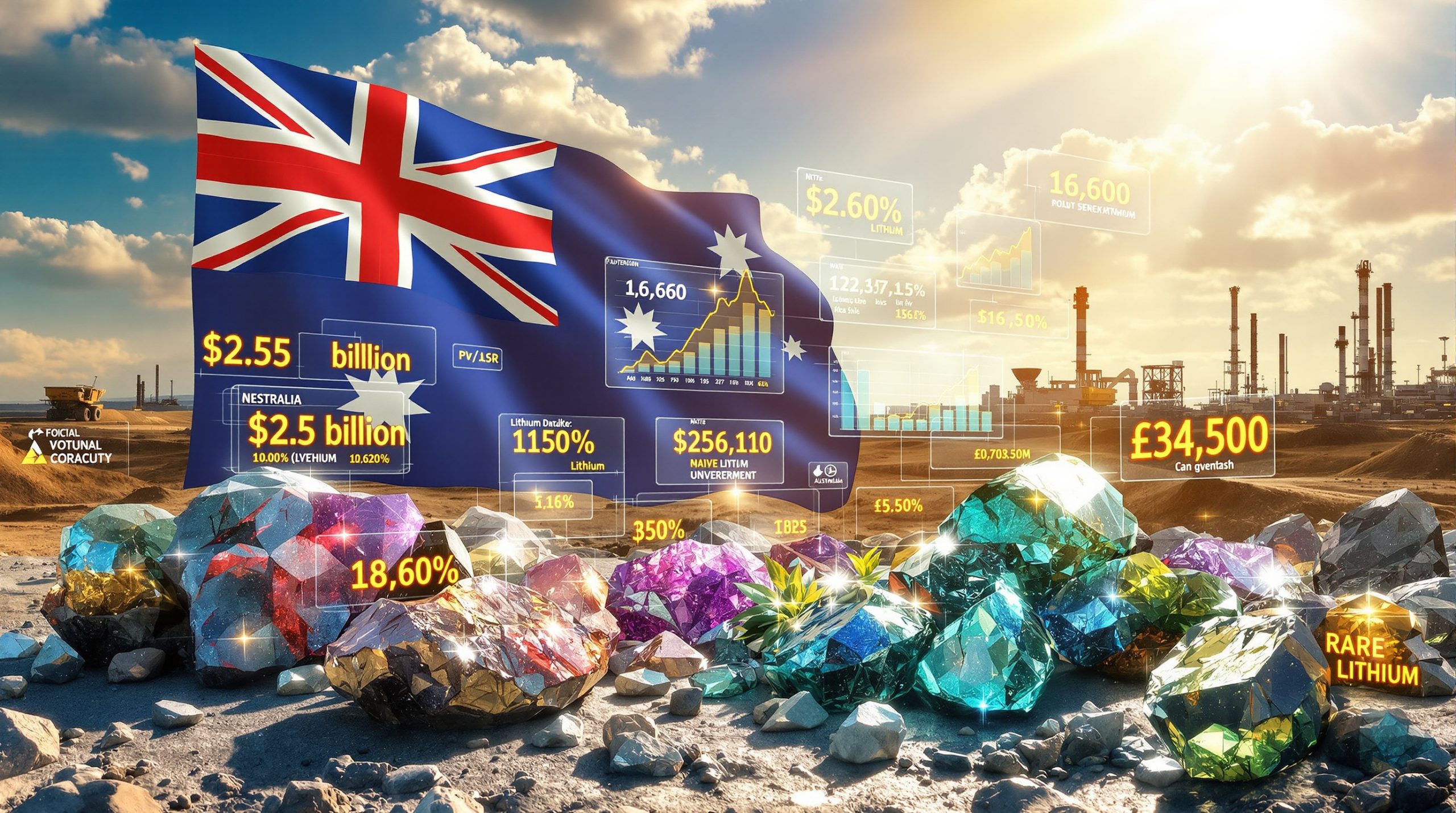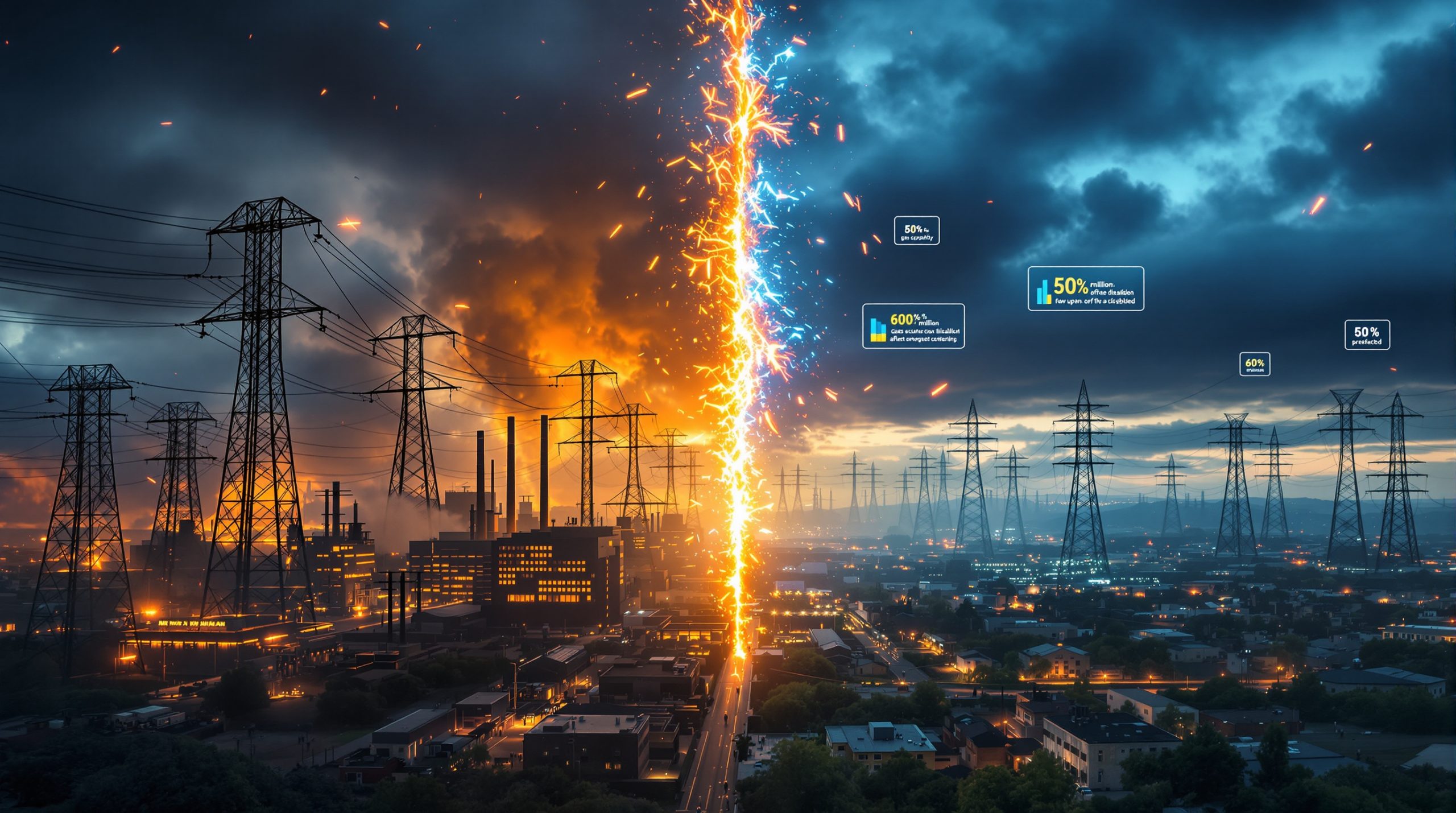Understanding China's Strategic Position in Global Rare Earth Markets
China's dominance in rare earth elements represents one of the most significant supply chain vulnerabilities in modern industrial history. The nation controls approximately 70% of global rare earth mining and an overwhelming 90% of processing capacity, according to the U.S. Geological Survey's 2025 Mineral Commodity Summaries. This stranglehold extends across 17 critical elements essential for everything from smartphone screens to wind turbine magnets. Furthermore, the implementation of China rare earth export controls has fundamentally altered global supply chain dynamics.
The global rare earth elements market reached $7.6 billion in 2023 and is projected to surge to $15.3 billion by 2030, driven primarily by explosive demand in renewable energy and electric vehicle sectors. These materials are irreplaceable in over 200 technology applications, making them indispensable to modern civilization's infrastructure.
The Critical Role of Rare Earth Elements in Modern Technology
Rare earth elements comprise 17 chemically similar metals that serve as the backbone of high-technology manufacturing. Heavy rare earths like dysprosium, terbium, and erbium are particularly crucial for permanent magnets in electric vehicle motors and wind turbines, while light rare earths including cerium, lanthanum, and neodymium power catalytic converters and advanced glass manufacturing.
The technical specifications are demanding. Neodymium-iron-boron permanent magnets require 29-32% neodymium content and remain irreplaceable in current electric vehicle motor designs. A single F-35 Lightning II fighter jet contains approximately 920 pounds of rare earth materials, illustrating the strategic importance of these elements in defense applications.
China produced 240,000 metric tons of rare earth oxides in 2024, representing 70% of global production, cementing its position as the world's dominant supplier.
New Export Control Framework: A Paradigm Shift in Global Trade
China's expanded export controls, taking effect December 1, 2025, represent a fundamental departure from traditional trade restrictions. According to the South China Morning Post's October 17, 2025 reporting, the new regulations will apply to products made outside China that use the country's rare earth technologies, as well as permanent magnets and other items containing rare earths sourced from China above designated proportions.
This extraterritorial approach mirrors Washington's Foreign Direct Product Rule, first applied to Huawei in May 2020. However, Morgan Stanley's analysis reveals a critical weakness: China lacks the established compliance architecture that underpins U.S. export controls, including decades-old legal frameworks, global licensing regimes, and allied cooperation mechanisms.
Timeline of Regulatory Evolution
The progression of China rare earth export controls has accelerated dramatically:
- December 2020: Export Control Law takes effect, establishing three control categories
- December 2023: Licensing requirements introduced for processing technologies
- October 2025: Sweeping expansion announced with extraterritorial scope
- December 1, 2025: New comprehensive controls take effect
The Chinese Ministry of Commerce characterised these measures as a proportional response to widening U.S. trade sanctions that took effect in late September 2025. Furthermore, these controls are interconnected with broader trade war impacts affecting global markets.
Industrial Sectors Facing Maximum Disruption
Electric Vehicle Manufacturing Under Pressure
The electric vehicle sector consumed approximately 12,000 metric tons of rare earth permanent magnets in 2024, representing 35% of total global demand. Tesla's Model 3 Long Range alone requires approximately 1 kilogram of rare earth elements per vehicle, primarily concentrated in motor magnets that demand dysprosium additions of 5-10% by weight to maintain magnetic properties at operating temperatures exceeding 150°C.
Automotive electric motors represent the most vulnerable link in the supply chain. These systems require dysprosium-enhanced neodymium magnets to function effectively at high temperatures, with no viable substitutes currently available at commercial scale.
Defense and Aerospace Vulnerabilities
Defense applications account for approximately $2.3 billion in annual rare earth element consumption, with aerospace guidance systems utilising samarium-cobalt magnets specifically for their temperature stability up to 350°C. The military implications extend beyond raw materials to encompass national security considerations.
Key defense vulnerabilities include:
- Guidance systems: Requiring temperature-stable magnetic components
- Communications equipment: Dependent on rare earth-doped fiber optics
- Electronic warfare systems: Utilising specialised rare earth alloys
- Radar components: Incorporating rare earth-based semiconductors
Geographic Impact Distribution
The European Union faces the most severe exposure, importing 98% of its rare earth elements from China in 2023, totalling approximately 15,800 metric tons. Consequently, the development of an European CRM facility has become a strategic priority.
Japan reduced its dependency from 83% in 2020 to 58% in 2024, while South Korea remained heavily dependent at 94%, with imports valued at $215 million in 2023.
Enforcement Challenges in Global Supply Chains
China's ability to enforce these expanded China rare earth export controls faces significant practical limitations. Rare earth supply chains typically involve 7-12 intermediate processing steps spanning multiple jurisdictions, making comprehensive monitoring extraordinarily complex.
Technical Monitoring Capabilities
Whilst chemical tracing of rare earth elements by origin is technically possible through isotopic fingerprinting, implementation requires sophisticated analytical equipment and international cooperation frameworks that don't currently exist. The global supply chain visibility software market, valued at $5.8 billion in 2024, provides tools for tracking but lacks the comprehensive coverage needed for effective enforcement.
Morgan Stanley's analysis highlights the enforcement challenge: effective implementation requires visibility over technology flows throughout intricate supply chains, leveraging established legal frameworks and international cooperation that China has yet to develop.
Comparison with U.S. Export Control Architecture
The United States' export control system benefits from several advantages China currently lacks:
- Established legal frameworks dating back decades
- Global licensing regime with standardised procedures
- Allied cooperation through multilateral agreements
- Rigorous liability enforcement with proven track record
The U.S. Bureau of Industry and Security processed over 27,000 export licence applications in fiscal year 2024, with an average processing time of 47 days. In addition, the recent U.S. minerals order demonstrates operational maturity that China's system has yet to achieve.
Alternative Supply Chain Development Strategies
Mining and Processing Diversification
Countries are investing heavily in alternative supply sources. Australia's Lynas Rare Earths produced 12,516 metric tons of neodymium-praseodymium in fiscal year 2024, representing approximately 12% of global production outside China. MP Materials' Mountain Pass facility in California produced 43,000 metric tons of rare earth concentrate in 2024, with expansion plans targeting 48,000 metric tons by 2026.
Processing capabilities are expanding beyond China's borders:
- Energy Fuels Inc. commenced rare earth processing at Utah's White Mesa Mill with 840 metric tons annual capacity
- Hastings Technology Metals projects 4,416 metric tons per annum from Australia's Yangibana project by 2027
- Canadian government allocated CAD $3.8 billion targeting 30% reduction in Chinese dependence by 2030
Strategic Reserve Programs
National stockpiling initiatives are accelerating across major economies. The United States' National Defense Stockpile held approximately 1,200 metric tons of rare earth materials as of September 2024, while Japan's JOGMEC maintained 6,110 metric tons as of March 2024.
The European Union's proposed Critical Raw Materials Strategic Reserve aims to hold 30 days of annual consumption, requiring approximately 1,300 metric tons of rare earth elements. These reserves require climate-controlled storage at 15-25°C with less than 50% relative humidity to prevent oxide degradation.
Recycling and Substitution Technologies
Global rare earth element recycling capacity reached approximately 7,500 metric tons in 2024, representing only 3% of total consumption but growing rapidly. Recovery rates from electronic waste range from 45-85% depending on source material and processing methodology.
The U.S. Department of Energy awarded $166 million in funding for rare earth recycling and alternative materials research in fiscal year 2024. Breakthrough technologies include:
- Hydrogen decrepitation achieving 92-96% neodymium recovery efficiency
- Cerium-based magnet substitution potentially reducing neodymium demand 15-20% by 2030
- Advanced separation techniques improving processing efficiency
Economic Implications and Market Volatility
Price Impact Analysis
Market reactions to China's export control announcement have been severe. Neodymium-praseodymium oxide prices surged 127% from $56,000/metric ton in December 2024 to $127,000/metric ton in October 2025. Dysprosium oxide experienced an 89% increase from $287,000/metric ton to $543,000/metric ton over the same period.
Historical precedent suggests sustained price elevation. Previous export control implementation in 2023 resulted in average price increases of 45-62% across major rare earth oxides within 90 days, with prices remaining elevated for extended periods.
Investment Flow Redirection
Capital allocation is shifting dramatically toward non-Chinese rare earth projects. The Australian government committed AUD $2 billion to critical minerals development through 2030, while private investment in alternative supply chains exceeded $8.5 billion globally in 2024.
Blockchain-based supply chain tracking implementations increased 340% between 2022-2024 across critical materials sectors, reflecting industry efforts to establish transparent, China-independent supply chains.
Strategic Implications for Global Trade Relations
Escalation Patterns in Trade Policy
China rare earth export controls represent the latest escalation in an ongoing trade conflict that has expanded beyond traditional tariff measures. The extraterritorial application of these controls mirrors U.S. semiconductor restrictions, suggesting a new paradigm in economic statecraft where critical materials become instruments of geopolitical leverage.
Under President Trump's administration, which resumed office in August 2025, trade tensions have intensified significantly. The timing of China's expanded controls, characterised by the Ministry of Commerce as a proportional response to widening U.S. sanctions, indicates continued escalation rather than diplomatic resolution.
Potential for Multilateral Solutions
The complexity of rare earth supply chains suggests that effective solutions require multilateral coordination rather than bilateral negotiations. However, existing international frameworks lack the specificity needed to address critical mineral security comprehensively.
Moreover, World Trade Organization dispute resolution mechanisms may prove inadequate given the national security implications involved. Alternative frameworks focusing on critical mineral security through allied cooperation appear more promising but remain underdeveloped.
Business Preparedness and Risk Mitigation
Supply Chain Risk Assessment
Companies must conduct comprehensive audits of their rare earth dependencies across product lines. This involves mapping supplier networks through multiple processing stages and identifying vulnerability points where Chinese-sourced materials or technologies create compliance risks.
Critical assessment areas include:
- Direct rare earth content in manufactured products
- Indirect exposure through component suppliers
- Technology dependencies on Chinese processing methods
- Contractual obligations with existing suppliers
Compliance Program Development
Organisations require robust compliance frameworks addressing China's new export control regulations. This includes understanding documentation requirements, implementing staff training programs, and developing technology solutions for supply chain transparency.
Legal framework understanding becomes critical as regulations take effect December 1, 2025. Companies must establish clear procedures for licence applications and maintain detailed records of rare earth sourcing and utilisation.
Strategic Planning Considerations
Long-term planning must address both immediate compliance requirements and strategic supply chain diversification. Investment in alternative material research, partnership development with non-Chinese suppliers, and inventory management strategies become essential components of business continuity planning.
Furthermore, considerations around energy transition security must balance inventory costs against supply security, particularly for companies with extended manufacturing lead times or limited supplier alternatives.
Future Market Structure and Technology Development
Technology Innovation Trajectories
Research into rare earth-free alternatives is accelerating across multiple sectors. Cerium-based permanent magnets show promise for applications tolerating lower energy density, potentially reducing neodymium demand significantly. Advanced recycling technologies are achieving higher recovery rates whilst reducing processing costs.
The timeline for meaningful technological breakthroughs remains uncertain, with most analysts projecting 5-10 years for commercially viable alternatives in critical applications like electric vehicle motors and wind turbine generators.
Geopolitical Scenario Planning
The potential for further escalation or de-escalation depends largely on broader U.S.-China trade relations under the current Trump administration. Regional bloc formation around critical mineral access appears increasingly likely, with allied nations coordinating strategic reserve programs and supply chain development initiatives.
International governance framework evolution will likely focus on critical mineral security rather than traditional trade liberalisation, reflecting the strategic importance of these materials in economic and national security contexts.
Market Structure Evolution Timeline
Meaningful supply chain diversification requires substantial infrastructure investment and development timelines extending beyond 2030. The investment requirements for alternative processing infrastructure exceed $50 billion globally, with most projects requiring 7-10 years from conception to operational status.
Competitive dynamics in post-China-dominant markets will likely feature higher prices, increased volatility, and greater emphasis on supply security over cost optimisation. Companies adapting early to this new paradigm will gain competitive advantages as traditional supply chains restructure.
Disclaimer: This analysis involves forecasts and speculation about future market conditions, geopolitical developments, and technological advances. Actual outcomes may differ significantly from projections. Readers should conduct independent research and consult with qualified professionals before making investment or strategic business decisions based on this information.
The transformation of global rare earth markets represents a fundamental shift in economic relationships between major powers. Whilst China rare earth export controls face enforcement challenges, their impact on supply chain security and market dynamics will reshape industrial strategies for decades to come. Success in this evolving landscape requires comprehensive risk assessment, strategic planning, and adaptive capacity to navigate unprecedented supply chain complexity.
Want to Capitalise on Rare Earth Market Volatility?
Discovery Alert's proprietary Discovery IQ model delivers instant notifications when ASX-listed rare earth and critical minerals companies announce significant discoveries, helping investors identify actionable opportunities ahead of broader market awareness. With rare earth prices experiencing dramatic volatility and supply chain disruptions creating new investment dynamics, subscribers can explore historic examples of exceptional discovery returns and begin their 30-day free trial today to position themselves strategically in this rapidly evolving sector.




